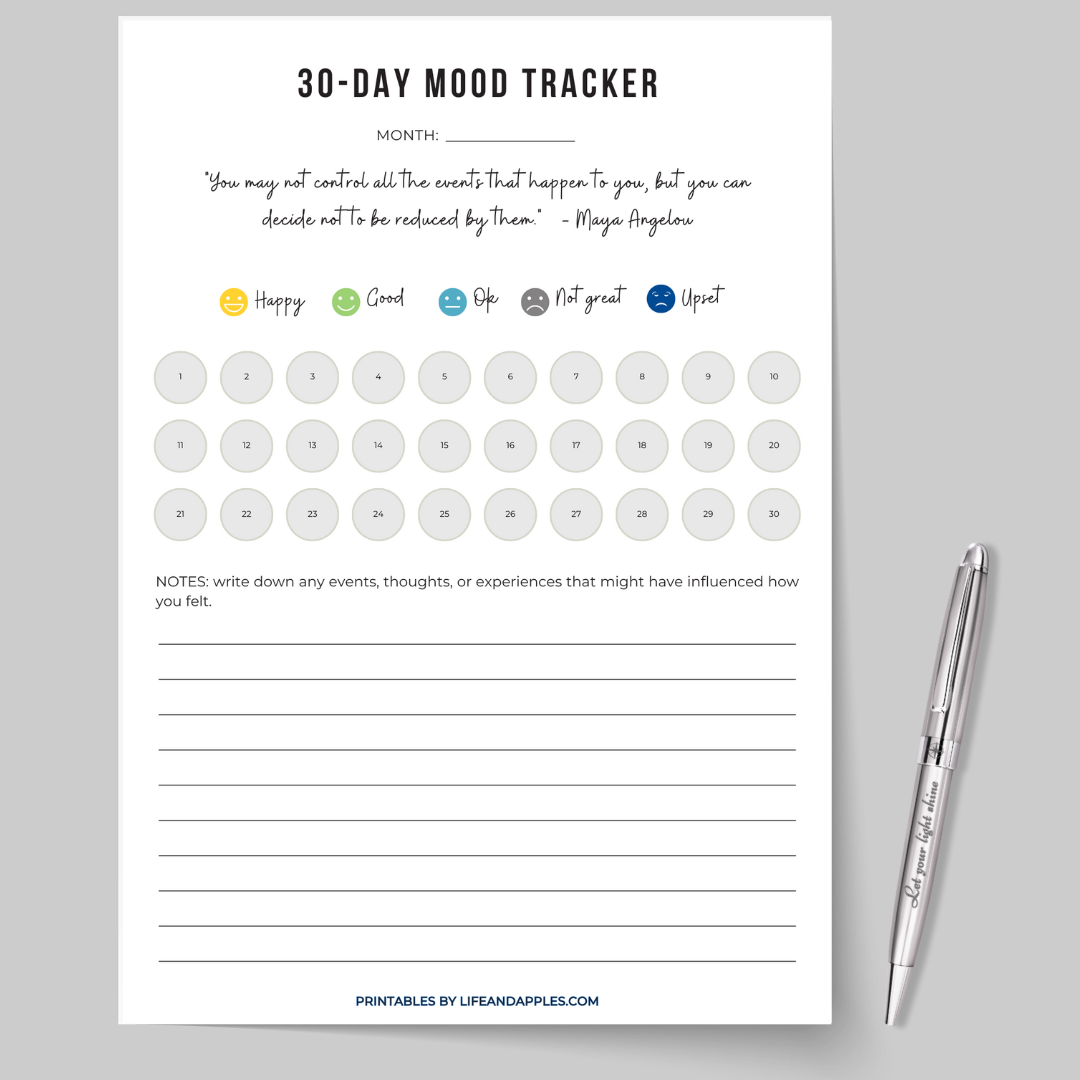In the journey toward emotional health, understanding the nuances of our daily moods plays a pivotal role. A 30-day mood tracker offers a simple yet profound tool to navigate this path, providing clarity and insights into our emotional patterns. Here’s why you should consider using it, how to get started, and what to look out for to truly benefit from this practice.
Why Use a 30-Day Mood Tracker?
Identify Patterns and Triggers
Daily mood tracking helps peel back the layers of your emotional state, revealing the subtleties of how you feel and why. Over time, this increased awareness can lead to deeper self-understanding.
Consistently noting your mood allows you to identify patterns in your emotional responses. You'll begin to see which events, interactions or activities consistently impact your mood, positively or negatively.
Boost Mental Health
Acknowledging and understanding your emotions is a step towards managing stress, anxiety, and depressive symptoms more effectively. It can empower you to take proactive steps towards improving your mental health.
Enhance Emotional Regulation
By recognizing your emotional triggers and patterns, you can develop strategies for better emotional regulation. This might involve adjusting certain behaviors, changing your environment, or finding healthy ways to cope with difficult emotions.
How to Use a 30-Day Mood Tracker
-
Choose Your Format: decide whether you prefer a worksheet, a digital app or a physical journal. Each has its benefits, but the key is consistency.
-
Set a Regular Time: dedicate a few minutes each day to record your mood. Many find it helpful to do this in the evening, reflecting on the day's events.
-
Rate Your Mood: use a simple scale (e.g., 1-5) or descriptive labels to note your mood. We also recommend color-coding your emotional scale for a visual overview.
-
Note Contributing Factors: beside your mood rating, jot down any events, thoughts, or experiences that might have influenced how you felt.
-
Reflect Weekly: at the end of each week, review your entries to identify any patterns or recurring themes.
What to Pay Attention To
Recurring Emotional Themes: look for emotions that appear regularly. Are certain days of the week more challenging than others? What might be contributing to this?
Impact of Activities: notice how different activities affect your mood. Does exercise uplift you? Does scrolling through social media bring you down?
The Role of Interactions: pay attention to how interactions with certain people influence your emotional state. Are there relationships that consistently contribute to your well-being or stress?
Environmental Influences: consider how changes in your environment, such as weather, location, or time of year, impact how you feel.
Your Coping Mechanisms: identify which coping strategies you tend to use and how effective they are. Are there healthier ways you could manage difficult emotions?
Logging our moods with a 30-day mood tracker is more than an exercise in self-examination; it's an act of self-care. By committing to this practice, you not only gain insight into your emotional life but also take an active role in shaping your path to emotional well-being. Remember, the goal isn't to judge or change your emotions but to understand them. With understanding comes the power to navigate life with greater compassion for yourself and others, fostering a balanced and fulfilling emotional life.



